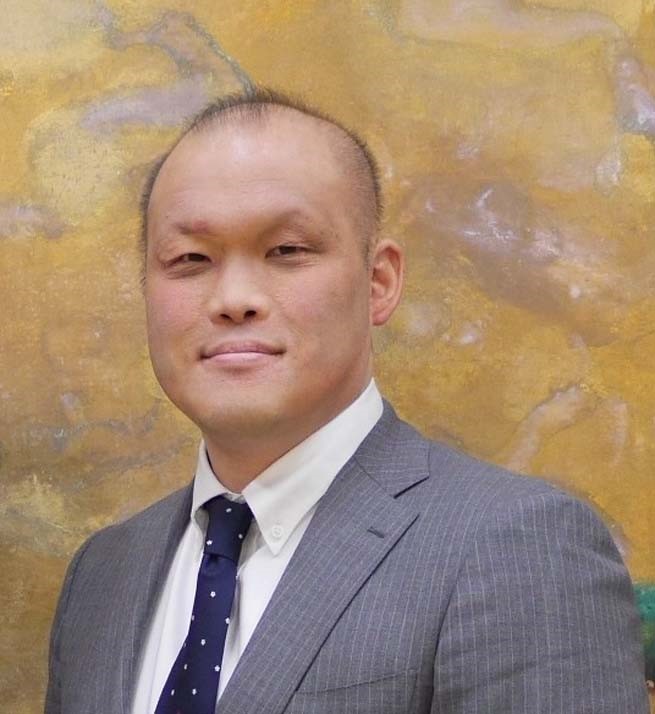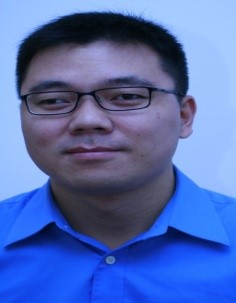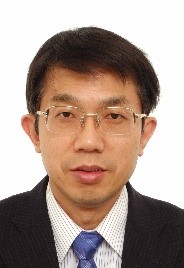报告时间:5月3日(星期五)14:00
报告地点:信息楼718会议室
(一)
报 告 人:佐藤大樹,日本东京工业大学副教授

(Prof. Daiki SATO, Tokyo Institute of Technology, Japan)
报告题目:Response Prediction of Passive Controlled Building with Passive-type Dampers
Considering its Performance Decrement under Long-Period Ground Motion
内容简介:This lecture presents a response evaluation of a passive controlled building with dampers considering its performance decrement under long-period ground motion. From the long-time sinusoidal wave test results using a full-scale viscous damper, it was shown that the performance decrement of the damper was based on energetic density. An analytical model of the damper considering the performance decrement caused by long-period cyclic loading was proposed, and its accuracy was confirmed by comparing with test results. The time history response analysis using a 20-story model with the proposed dampers was performed. It was verified that the response of the passive controlled building with dampers increases under certain long-period ground motions. Especially, for vibration control of a building designed with insufficient dampers, it was found that the response increased with the influence of the performance decrement of the damper when the long-period ground motion was received.
报告人简介:
03/2002 : Tohoku Institute of Technology, Mr. Eng.
09/2006 : Tokyo Institute of Technology, Dr. Eng.
10/2006 - 3/2007 : Post-doctoral fellow at Tokyo Tech.
4/2007 - 3/2013 : Assistant Prof. at Tokyo University of Science
4/2013 - 12/2013 : Researcher at National research Institute for Earth and Disaster prevention
1/2014 - present : Associate Prof. at Tokyo Institute of Technology
(二)
报 告 人:吴秋伟,丹麦技术大学副教授

(Prof. Qiuwei Wu, Technical University of Denmark, Denmark)
报告题目:Smart Energy Solutions for Renewable base Energy Systems
内容简介:Environmental concerns and the quest for energy supply independence have resulted in increasing penetration of renewable energy sources (RESs) and a move toward electrification of transportation and heating. With the long-term goal of developing renewable based energy systems, the integration of electricity, heat and gas systems has become necessary in order to realize efficient and secure operation of the future renewable based energy systems. The interactions among electricity, heat and gas sectors can provide further flexibility to handle the fluctuations from renewables. In the talk, the smart energy solutions for the 2050 Danish energy systems will be introduced which integrates multi-energy sectors. In the end, the Power2Gas technology will be introduced and its technical and economic feasibility in the future energy system will be discussed.
报告人简介:Qiuwei Wu (M’08-SM’15) obtained the PhD degree in Power System Engineering from Nanyang Technological University, Singapore, in 2009.
He was a senior R&D engineer with Vestas Technology R&D Singapore Pte Ltd from Mar. 2008 to Oct. 2009. He has been working at Department of Electrical Engineering, Technical University of Denmark (DTU) since Nov. 2009 (PostDoc Nov. 2009-Oct. 2010, Assistant Professor Nov. 2010-Aug. 2013, Associate Professor since Sept. 2013). He was a visiting scholar at Department of Industrial Engineering & Operations Research (IEOR), University of California, Berkeley, from Feb. 2012 to May 2012 funded by the Danish Agency for Science, Technology and Innovation (DASTI), Denmark. He was a visiting professor named by Y. Xue, an Academician of Chinese Academy of Engineering, at Shandong University, China, from Nov. 2015 to Dec. 2017. He was a visiting scholar at School of Engineering and Applied Sciences, Harvard University from Nov. 2017 to Oct. 2018 funded by the Otto Monsteds Fond.
His research interests are power system operation and control with renewables, including modeling and control of wind power, active distribution networks, and operation and real time control of integrated energy systems. He has published 204 scientific papers (including 108 WoS journal papers), 2 books, 4 book chapters and 2 patents.
He is an Editor of IEEE Transactions on Smart Grid and IEEE Power Engineering Letters. He is also an Associate Editor of International Journal of Electrical Power and Energy Systems, and Journal of Modern Power Systems and Clean Energy. He is a Subject Editor for IET Renewable Power Generation, and IET Generation, Transmission & Distribution.
(三)
报 告 人:忻欣,日本岡山県立大学教授

(Prof. Xin Xin, Okayama Prefectural University, Japan)
报告题目:Controllability and Observability of an n-Link Underactuated Planar Robot with
Different Actuator-Sensor Configurations
内容简介:The controllability and observability of complex networks is a very hot topic. It is interesting to study how to control a complex network with minimum number of driver nodes. We aim to contribute to the research of the controllability and observability of complex networks by studying an n-link underactuated revolute planar robot with all the links moving in the same vertical plane, which has received considerable research interest recent years. Without making any assumption on the physical parameters of the robot, we prove that the robot with a single active joint is linearly strongly structurally controllable and observable (that is, linear controllable and observable for all physical parameters of the robot) around the UEP (upright equilibrium point) if and only if its first or last joint is active. Moreover, we present the results of the linear controllability and observability of the robot with an intermediate active joint and the robot with multiple actuators and encoders. Specifically, we prove that the robot with its first and last joint being passive is linearly strongly structurally controllable and observable around the UEP if and only if the robot has at least two active adjacent joints among (n-2) intermediate joints. We present a numerical example to validate the above results.
报告人简介:Xin Xin received the B.S. degree in 1987 from the University of Science and Technology of China, Hefei, China, and the Ph.D. degree in 1993 from the Southeast University, Nanjing, China. From 1991 to 1993, he did his Ph.D. studies in Osaka University as a co-advised student of China and Japan with the Japanese Government Scholarship. He also received the Doctor degree in engineering in 2000 from Tokyo Institute of Technology. From 1993 to 1995, he was a postdoctoral researcher and then became an associate professor of Southeast University. From 1996 to 1997, he was with the New Energy and Industrial Technology Development (NEDO), Japan as an advanced industrial technology researcher. From 1997 to 2000, he was an assistant professor of Tokyo Institute of Technology. From 2000, he has been with Okayama Prefectural University as an associate professor, where he is now a professor since 2008. He served as the Chair of the Department of Systems Engineering and assistant Dean of the Faculty of Computer S cience and Systems Engineering. He has more than 200 publications in journals, international conferences and book chapters. He received the division best paper award of SICE Annual Conference on Control Systems in 2004. His current research interests include robotics, dynamics and control of nonlinear and complex systems. He is now associate editors of IEEE Control Systems Letters, Transaction of the Society of Instrument and Control Engineers. He served as associated editors of Journal of the Robotics Society of Japan.

